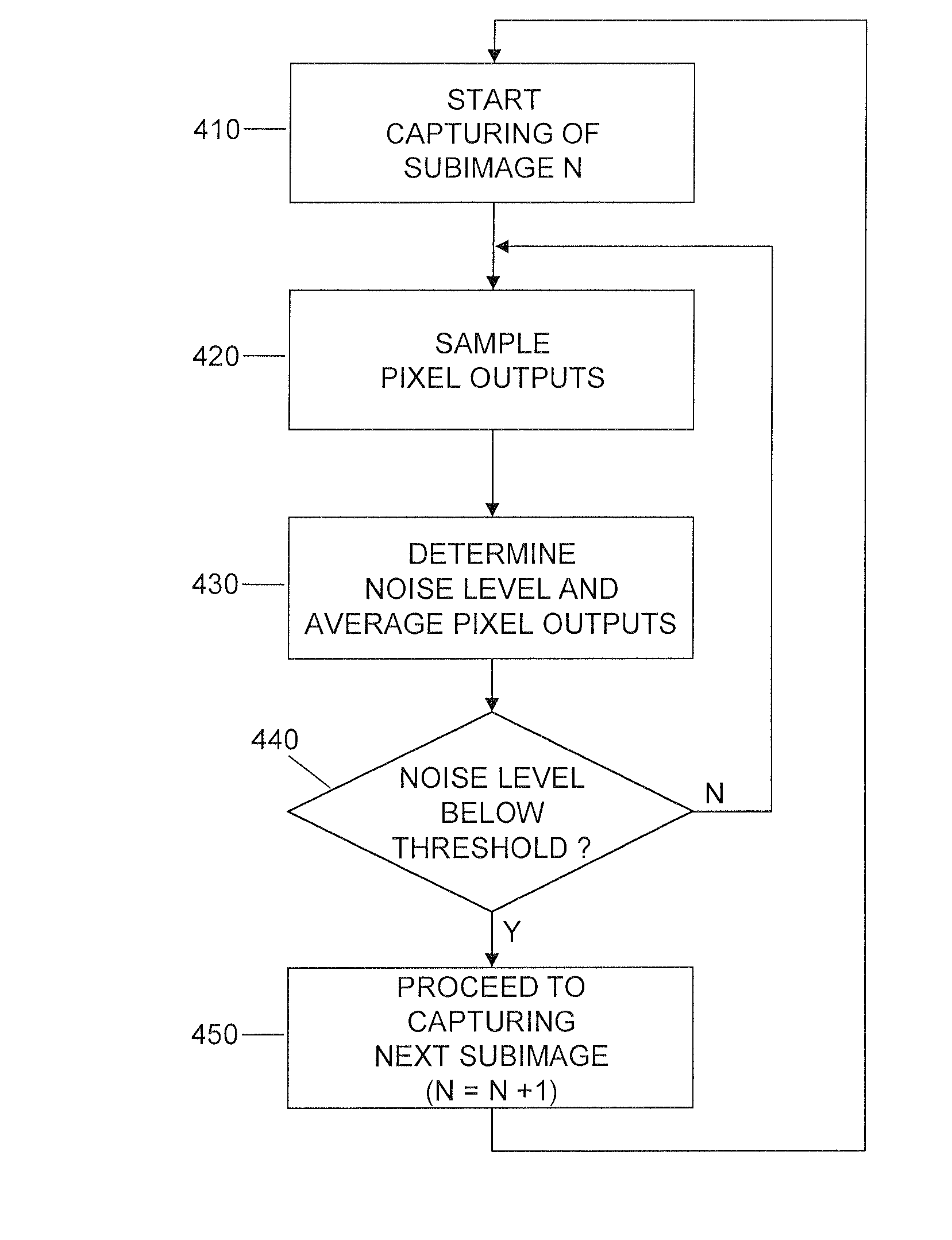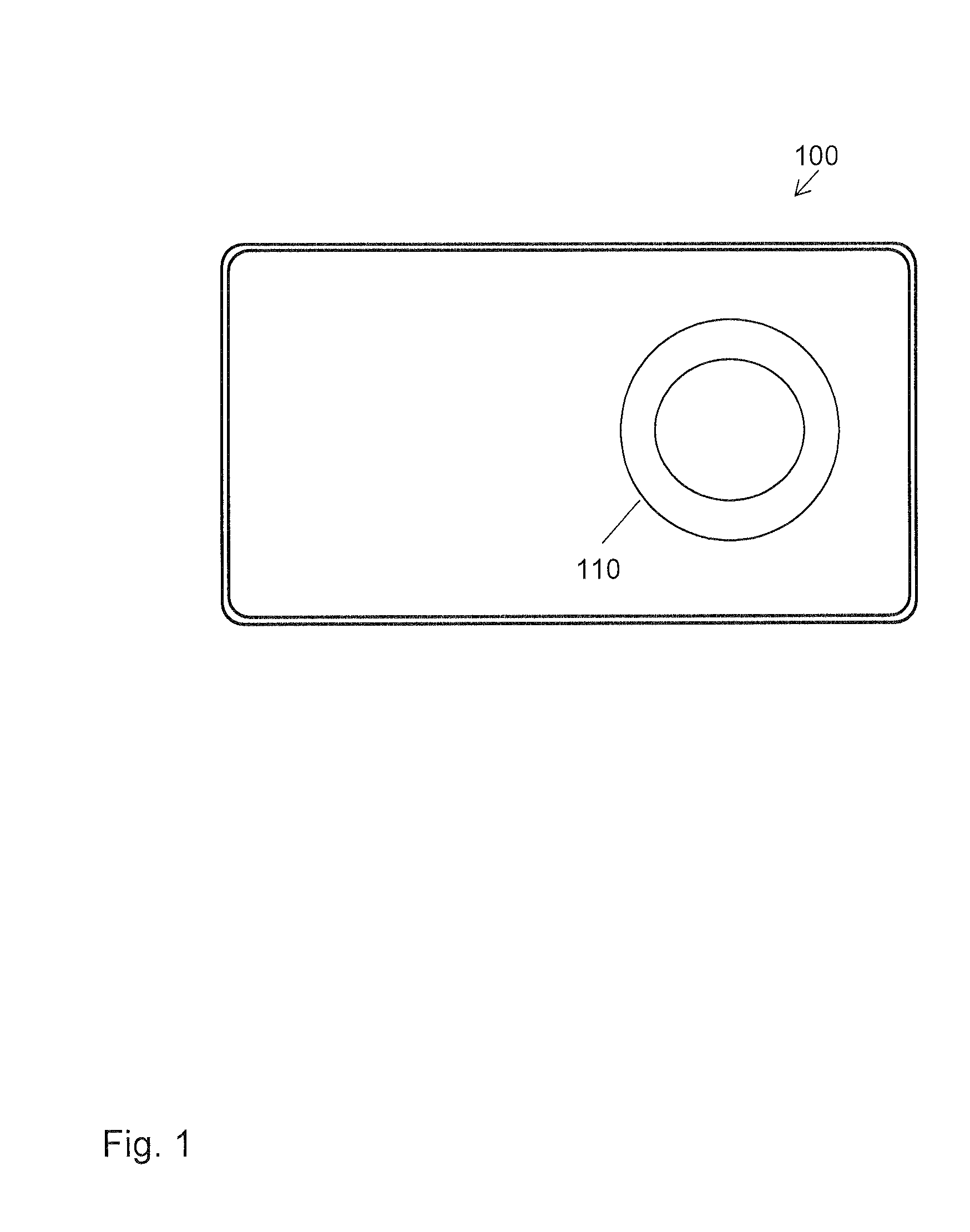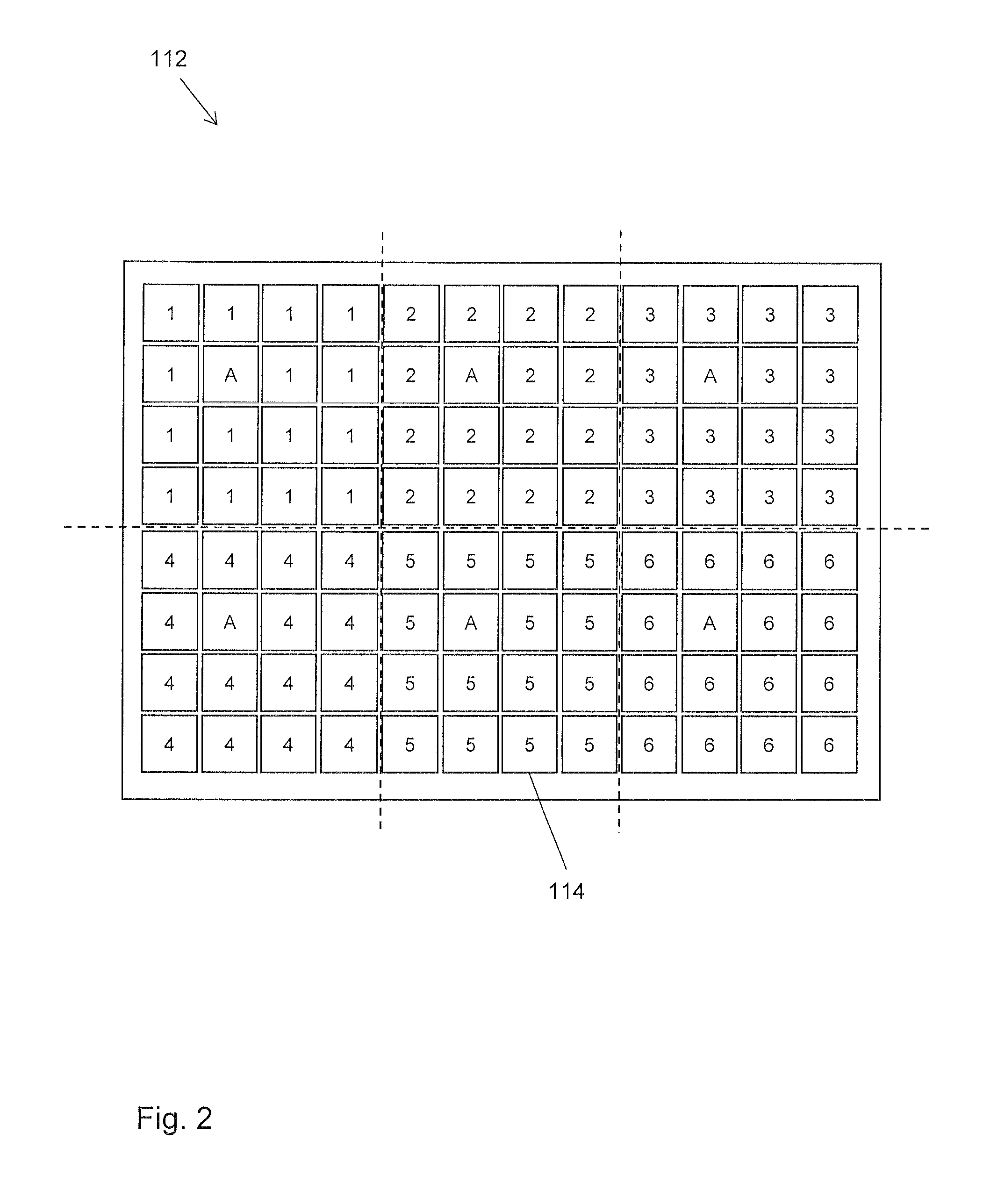Noise level based exposure time control for sequential subimages
a sub-image and noise level technology, applied in the field of scene imaging, can solve the problems of affecting the overall image, and affecting the overall image, and achieve the effect of compensating for the overall imag
- Summary
- Abstract
- Description
- Claims
- Application Information
AI Technical Summary
Benefits of technology
Problems solved by technology
Method used
Image
Examples
Embodiment Construction
[0024]In the following, exemplary embodiments of the invention will be described in more detail. It has to be understood that the following description is given only for the purpose of illustrating the principles of the invention and is not to be taken in a limiting sense. Rather, the scope of the invention is defined only by the appended claims and is not intended to be limited by the exemplary embodiments described hereinafter.
[0025]The illustrated embodiments relate to imaging of a scene, specifically with the aim of efficiently capturing HDR still images or HDR videos. In the illustrated embodiments, this involves utilization of an imaging sensor which is organized in multiple subsets of pixels. The subsets of pixels are utilized for capturing a sequence of subimages. In this process, each subset captures a corresponding one of the subimages. For capturing each subimage, an exposure time is individually controlled. This is accomplished depending on a noise level detected in the ...
PUM
 Login to View More
Login to View More Abstract
Description
Claims
Application Information
 Login to View More
Login to View More - R&D
- Intellectual Property
- Life Sciences
- Materials
- Tech Scout
- Unparalleled Data Quality
- Higher Quality Content
- 60% Fewer Hallucinations
Browse by: Latest US Patents, China's latest patents, Technical Efficacy Thesaurus, Application Domain, Technology Topic, Popular Technical Reports.
© 2025 PatSnap. All rights reserved.Legal|Privacy policy|Modern Slavery Act Transparency Statement|Sitemap|About US| Contact US: help@patsnap.com



